Don't wanna be here? Send us removal request.
Text
Overcoming Challenges of Home IUI for Unexplained Infertility
Home Intrauterine Insemination (IUI) is a common fertility treatment option for couples experiencing unexplained infertility. Unexplained infertility refers to cases where no identifiable cause for infertility can be found after a thorough evaluation. While Home IUI can be a promising solution, there are certain challenges that individuals or couples may face along the way. By understanding these challenges and exploring strategies to overcome them, individuals can increase their chances of success. This article delves into the challenges of Home IUI for unexplained infertility and provides insights on how to overcome them. Let's explore the headings and subheadings:
Understanding Unexplained Infertility:
Definition and Prevalence of Unexplained Infertility
Emotional Impact of Unexplained Infertility
Importance of Comprehensive Testing and Evaluation
Challenge: Uncertainty and Emotional Rollercoaster:
Coping with the Lack of a Definite Diagnosis
Dealing with Frustration and Disappointment
Seeking Emotional Support and Counseling
Challenge: Optimizing Ovulation and Timing:
Monitoring Ovulation with Precision
Using Ovulation Predictor Kits (OPKs) or Fertility Monitors
Consulting with a Fertility Specialist for Timing Advice
Maximizing the Chances of Synchronizing Sperm and Egg
Challenge: Sperm Quality and Quantity:
Ensuring Adequate Sperm Count and Motility
Sperm Enhancement Techniques and Supplements
Discussing Sperm Health with a Reproductive Specialist
Challenge: Cervical Mucus and Uterine Environment:
Understanding the Role of Cervical Mucus in Fertility
Addressing Issues with Cervical Mucus Quality
Optimizing the Uterine Environment for Implantation
Challenge: Multiple Failed Home IUI Cycles:
Seeking Expert Evaluation and Advice
Exploring Alternative Treatment Options
Considering Advanced Reproductive Techniques
Strategies to Overcome Challenges:
Education and Awareness about Unexplained Infertility
Open Communication with Your Partner and Healthcare Providers
Exploring Stress-Reduction Techniques and Lifestyle Changes
Consideration of Complementary Therapies such as Acupuncture
Conclusion: Overcoming challenges in Home IUI for unexplained infertility requires resilience, support, and a proactive approach. While the absence of a clear cause can be frustrating, it is essential to stay positive and explore strategies to maximize the chances of success. Open communication with your partner and healthcare team, seeking emotional support, and implementing strategies to optimize ovulation, sperm quality, and uterine environment can improve the outcomes. In cases of multiple failed Home IUI cycles, it may be beneficial to seek expert evaluation and consider alternative treatment options. Remember, each fertility journey is unique, and with determination and support, you can navigate the challenges of unexplained infertility and increase your chances of achieving a successful pregnancy.

0 notes
Text
Home IUI and Fertility Awareness Methods
Home Intrauterine Insemination (IUI) is a fertility treatment that can be combined with fertility awareness methods to optimize the chances of conception. Fertility awareness methods involve tracking and interpreting various signs and symptoms of fertility to determine the most fertile days of a woman's menstrual cycle. By incorporating fertility awareness methods into the process of Home IUI, individuals or couples can enhance their understanding of their fertility patterns and increase the likelihood of successful conception. This article explores the relationship between Home IUI and fertility awareness methods, highlighting their benefits and providing insights on how to effectively utilize them. Let's delve into the headings and subheadings:
Understanding Fertility Awareness Methods:
Definition and Principles of Fertility Awareness
Tracking Menstrual Cycles and Identifying Fertile Days
Popular Fertility Awareness Methods (e.g., Basal Body Temperature, Cervical Mucus, Calendar Method)
The Role of Fertility Awareness in Home IUI:
Enhancing Timing Accuracy for Home IUI
Identifying Ovulation and Optimal Fertility Window
Maximizing Sperm-Egg Synchronization
Incorporating Fertility Awareness into Home IUI:
Charting Menstrual Cycles and Tracking Ovulation
Using Ovulation Predictor Kits (OPKs) or Fertility Monitors
Monitoring Basal Body Temperature (BBT)
Observing Changes in Cervical Mucus
Benefits of Combining Fertility Awareness and Home IUI:
Enhanced Timing Accuracy and Precision
Increased Understanding of Individual Fertility Patterns
Empowerment and Active Participation in the Fertility Journey
Potential Challenges and Limitations:
Variability in Menstrual Cycle Length and Ovulation Timing
Learning Curve and Commitment Required for Fertility Awareness Methods
Possible Inaccuracies or Misperceptions in Interpretation
Tips for Effectively Utilizing Fertility Awareness Methods in Home IUI:
Educate Yourself about Fertility Awareness Methods
Consistency and Accuracy in Tracking and Recording Data
Seek Guidance from a Fertility Specialist or Fertility Educator
Combine Multiple Fertility Awareness Methods for a Comprehensive Approach

Conclusion: Incorporating fertility awareness methods into Home IUI can be a valuable strategy to optimize the chances of successful conception. By tracking menstrual cycles, monitoring ovulation, and understanding individual fertility patterns, individuals or couples can enhance the timing accuracy and increase their chances of synchronizing sperm and egg. While there may be challenges and limitations associated with fertility awareness methods, with proper education, consistency, and guidance, these methods can significantly contribute to the effectiveness of Home IUI. It is recommended to consult with a fertility specialist or fertility educator to ensure accurate interpretation and implementation of fertility awareness methods. Remember, combining Home IUI with fertility awareness methods empowers individuals or couples to take an active role in their fertility journey, leading to a greater understanding of their bodies and increased chances of achieving a successful pregnancy
0 notes
Text
Female factor infertility
Female factor infertility is a condition where the female partner has difficulty or inability to contribute to conception. Female infertility accounts for approximately 40-50% of infertility cases. In this article, we will discuss the causes, diagnosis, and treatment options for female factor infertility.

Causes of Female Factor Infertility
There are several factors that can contribute to female factor infertility:
Ovulation disorders: Ovulation disorders are the most common cause of female infertility. It can be caused by a variety of factors such as polycystic ovary syndrome (PCOS), thyroid disorders, and premature ovarian failure.
Fallopian tube damage: Damage to the fallopian tubes can prevent the egg from being fertilized by the sperm.
Endometriosis: Endometriosis is a condition where the tissue that lines the uterus grows outside of the uterus. It can affect fertility by blocking the fallopian tubes or by affecting the quality of the eggs.
Uterine abnormalities: Uterine abnormalities such as fibroids and polyps can affect the implantation of the fertilized egg.
Age: As women age, the quality and quantity of eggs decrease, which can make it more difficult to conceive.
Diagnosis of Female Factor Infertility
Female factor infertility is diagnosed through a series of tests such as:
Ovulation testing: Ovulation testing measures the levels of hormones such as progesterone and luteinizing hormone (LH) to determine if ovulation is occurring.
Hysterosalpingography: Hysterosalpingography is a test that uses X-rays to check for blockages in the fallopian tubes.
Laparoscopy: Laparoscopy is a surgical procedure that allows the doctor to view the reproductive organs to identify any abnormalities.
Ovarian reserve testing: Ovarian reserve testing measures the quantity and quality of the eggs.
Treatment Options for Female Factor Infertility
There are several treatment options for female factor infertility:
Medications: Certain medications can help regulate ovulation, improve the quality of the eggs, and prepare the uterus for implantation.
Surgery: Surgery may be necessary to remove uterine abnormalities or repair damage to the fallopian tubes.
Assisted Reproductive Techniques (ART): ART involves using medical procedures to help fertilize an egg. This includes intrauterine insemination (IUI) and in vitro fertilization (IVF).
Donor eggs: Donor eggs may be used if the female partner has a complete absence of eggs or if other treatments have been unsuccessful.
Prevention of Female Factor Infertility
There are several steps women can take to reduce the risk of female factor infertility:
Maintain a healthy lifestyle: Maintaining a healthy weight, eating a balanced diet, and exercising regularly can help improve fertility.
Avoid exposure to toxins: Exposure to certain toxins such as pesticides and chemicals can affect fertility.
Manage medical conditions: Managing medical conditions such as PCOS and thyroid disorders can help reduce the risk of female factor infertility.
Plan for pregnancy at a younger age: As women age, the quality and quantity of eggs decrease, which can make it more difficult to conceive.
Conclusion
Female factor infertility is a common condition that can affect a couple's ability to conceive. Ovulation disorders, fallopian tube damage, endometriosis, uterine abnormalities, and age can all contribute to female factor infertility. Diagnosis is done through a series of tests, and treatment options include medications, surgery, assisted reproductive techniques, and donor eggs. Women can reduce the risk of female factor infertility by maintaining a healthy lifestyle, avoiding exposure to toxins, managing medical conditions, and planning
0 notes
Text
Surviving IUI: How to Manage Pain and Discomfort
If you're struggling with infertility and trying to conceive, you're not alone. Thanks to advancements in assisted reproductive techniques, there's now hope for many women who have been unable to get pregnant. One such technique is intrauterine insemination (IUI), which involves placing sperm directly into the woman's uterus to increase the chances of conception.

IUI is a popular choice for women facing infertility issues, and it's a safe and painless method of conception. Despite what many people believe, IUI is not a painful process. In fact, many women find the procedure to be relatively straightforward and manageable.
If you're considering IUI as a potential fertility treatment, it's important to do your research and discuss the procedure with your doctor. They can help you determine if IUI is the right choice for you and guide you through the process. So don't give up hope – with the help of assisted reproductive techniques like IUI, you too can become a parent.
Intrauterine Insemination: An Overview
Intrauterine Insemination (IUI) is a type of assisted reproductive technology that aims to increase the chances of conception by placing sperm directly into the woman’s uterus through the cervix. The process reduces the distance and time that sperm has to travel, making it more favorable for fertilization. IUI is often the first fertility treatment option recommended by doctors and is suitable for couples and LGBTQ+ families facing various infertility issues.
Here are some common problems where IUI is used as a solution:
Unexplained infertility Unexplained infertility refers to the inability to conceive despite normal results from infertility testing. It is a common issue faced by couples and can be treated through various methods, including intrauterine insemination (IUI). IUI is a popular first line of treatment for unexplained infertility as it involves placing sperm directly into the uterus to increase the chances of fertilization.
Donor sperm requirement
Mild male factor infertility
Endometriosis-related infertility
Ovulatory factor infertility
Semen allergy
Cervical factor infertility
By performing IUI and using medications, doctors aim to achieve a good-quality egg. In the case of semen allergy, the proteins present in semen can be removed before the IUI procedure. And for cervical factor infertility, the process of IUI bypasses the cervix and deposits sperm directly into the uterus, increasing the number of sperm available for fertilization.
0 notes
Text
Understanding the Benefits of Sperm Washing and How it Can Help You Conceive
Sperm washing is a process used in assisted reproductive technology (ART) to separate sperm from semen. The process involves the use of specialized solutions and centrifugation to separate the sperm from other components in the semen. Sperm washing can be beneficial for couples struggling with infertility, especially those with male factor infertility. In this blog post, we'll explore the sperm washing process and how Androwash can help improve fertility.
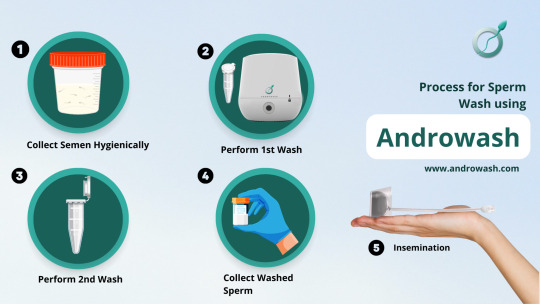
What is Sperm Washing and How Does it Work?
Sperm washing is a process that separates the sperm from the semen and other components. The process begins by collecting a semen sample and adding a special solution that separates the sperm from other components, such as white blood cells and debris. The solution and sperm are then placed in a centrifuge, which spins the sample at high speeds. This separates the sperm from the solution and other components, resulting in a concentrated sample of sperm.
Benefits of Sperm Washing
Improves Fertility: Sperm washing can improve fertility by removing harmful components from the semen that can interfere with conception, such as white blood cells, debris, and bacteria.
Increases Pregnancy Rates: By removing harmful components from the semen, sperm washing can increase the chances of pregnancy. In some cases, sperm washing can increase pregnancy rates by several percentage points.
Increases Sperm Quality: Sperm washing can improve sperm quality by removing components that can cause inflammation and damage to the sperm. This can result in a higher concentration of healthy, viable sperm.
How Androwash Can Improve Fertility
Androwash is a specialized solution used in sperm washing to separate sperm from other components in the semen. The solution contains a blend of nutrients and antioxidants that protect and nourish the sperm. Androwash has been shown to increase sperm count, motility, and viability, making it an effective tool for improving fertility.
Conclusion
Sperm washing is a process used in ART to separate sperm from semen and improve fertility. By removing harmful components from the semen and increasing sperm quality, sperm washing can increase the chances of pregnancy. Androwash is a specialized solution used in sperm washing that can improve fertility by nourishing and protecting the sperm. If you're struggling with infertility, sperm washing may be a viable option to consider. It's important to speak with your doctor to determine if sperm washing is right for you and to discuss any potential risks and benefits.
0 notes
Text
Overcoming Infertility with Androwash: The Benefits of Sperm Washing for Infertile Sperm
Understanding How Androwash Can Help Improve Sperm Quality and Increase Pregnancy Rates
Infertility can be a difficult and emotional journey for couples trying to conceive. For couples with male factor infertility, the cause of infertility may lie with the sperm. In these cases, sperm washing can be a viable option to improve fertility and increase pregnancy rates. In this blog post, we'll explore the benefits of sperm washing for infertile sperm and how Androwash can help.
What is Infertile Sperm?
Infertile sperm refers to sperm that is unable to fertilize an egg and cause pregnancy. This can be due to a variety of factors, including low sperm count, poor sperm motility, and abnormal sperm morphology. Infertile sperm can be caused by a number of factors, including age, lifestyle factors, and underlying health conditions.
Benefits of Sperm Washing for Infertile Sperm
Improves Sperm Quality: Sperm washing can improve sperm quality by removing harmful components from the semen that can interfere with conception, such as white blood cells, debris, and bacteria. This can result in a higher concentration of healthy, viable sperm.
Increases Pregnancy Rates: By removing harmful components from the semen, sperm washing can increase the chances of pregnancy. In some cases, sperm washing can increase pregnancy rates by several percentage points.
Increases Sperm Count: Sperm washing can increase sperm count by removing components that can interfere with sperm production. This can result in a higher concentration of sperm, increasing the chances of conception.
How Androwash Can Help Improve Infertility
Androwash is a specialized solution used in sperm washing to separate sperm from other components in the semen. The solution contains a blend of nutrients and antioxidants that protect and nourish the sperm. Androwash has been shown to increase sperm count, motility, and viability, making it an effective tool for improving fertility in couples with infertile sperm.

Conclusion
Infertility can be a difficult journey for couples trying to conceive, especially for couples with male factor infertility. Sperm washing can be a viable option to improve fertility and increase pregnancy rates. Androwash is a specialized solution used in sperm washing that can improve fertility by nourishing and protecting the sperm. If you're struggling with infertility, sperm washing may be a viable option to consider. It's important to speak with your doctor to determine if sperm washing is right for you and to discuss any potential risks and benefits.
0 notes
Text
A Step-by-Step Guide to Home-Based Sperm Washing with Androwash
Infertility can be a challenging and emotional experience for couples. Sperm washing is a process that can help improve the chances of conception for couples facing male infertility issues. Androwash is a sperm washing method that can be performed at home with the help of a kit. In this blog, we will provide a step-by-step guide to the home-based sperm washing method with Androwash.
Step 1: Obtain the Androwash kit
The first step in the home-based sperm washing method is to obtain the Androwash kit. The kit can be purchased online or from a local pharmacy. It is important to carefully read the instructions and follow the instructions provided in the kit.

Step 2: Collect the semen sample
The next step is to collect a semen sample. This can be done at home or in a private setting. It is important to follow the instructions provided in the Androwash kit for collecting the semen sample.
Step 3: Prepare the sperm washing solution
The third step is to prepare the sperm washing solution. The solution can be made by mixing the contents of the Androwash kit with distilled water. It is important to follow the instructions provided in the kit for preparing the sperm washing solution.
Step 4: Wash the sperm
The fourth step is to wash the sperm. This involves adding the semen sample to the sperm washing solution and allowing it to mix for a period of time. The instructions in the Androwash kit will provide the exact time and steps for washing the sperm.
Step 5: Collect the washed sperm
The final step is to collect the washed sperm. This can be done by using a syringe to remove the washed sperm from the sperm washing solution. It is important to carefully follow the instructions provided in the Androwash kit for collecting the washed sperm.
Conclusion:
Sperm washing with Androwash is a simple and convenient solution for couples facing male infertility. The home-based sperm washing method with Androwash is cost-effective and easy to perform, making it a popular alternative to visiting a fertility clinic. By following the steps outlined in this guide, couples can successfully perform a sperm wash at home using Androwash. However, it is important to discuss your options with a doctor or fertility specialist to determine the best course of action for you and your partner. While the home-based sperm washing method with Androwash can be a helpful solution, it is still important to seek medical advice and guidance to ensure the best possible outcome for you and your partner.
0 notes
Text
Sperm Washing and Egg Donation
Egg donation is a treatment option for couples facing infertility, particularly for those women who have difficulty producing healthy eggs. One aspect of the egg donation process that is often overlooked is the sperm of the intended father. Sperm washing is a laboratory procedure that can be used to prepare sperm for use in assisted reproductive technologies, such as intrauterine insemination (IUI) and in-vitro fertilization (IVF) when using donated eggs. In this article, we will discuss the role of sperm washing in the context of egg donation and its effectiveness.
Sperm washing and egg donation:
Sperm washing is a laboratory procedure that can be used to prepare sperm for use in assisted reproductive technologies when using donated eggs. The procedure involves separating the healthy, active sperm from the other components of semen, such as mucus and enzymes. The sperm are then placed in a special media solution that improves their survival rate and motility. The washed sperm is then ready for use in assisted reproductive technologies, such as IUI and IVF.
Effectiveness of sperm washing in egg donation:
Sperm washing can be an effective treatment option for couples using egg donation. The procedure can help to select the highest quality sperm for fertilization and increase the chances of fertilization. It can also help to overcome problems with low sperm count, poor sperm motility, or issues with the cervical mucus. This can increase the chances of fertilization and conception.
Additionally, sperm washing can also be useful for couples who are using donor sperm, as it can help to remove any unwanted materials from the sperm specimen, such as bacteria or hormones, which can impair fertility.
It's important to note that sperm washing may not be necessary for all couples using egg donation, as the sperm quality may be normal. It's important to consult
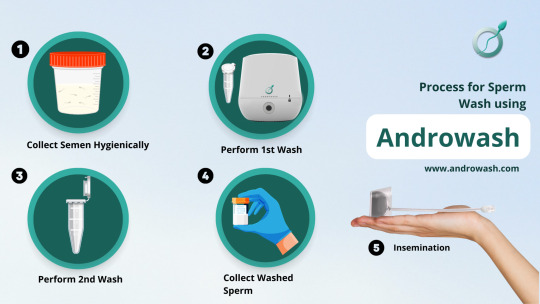
conclusion
In conclusion, sperm washing is a valuable treatment option for couples using egg donation. The procedure can help to select the highest quality sperm for fertilization and increase the chances of fertilization, by separating the healthy, active sperm from the other components of semen, such as mucus and enzymes, and placing them in a special media solution that improves their survival rate and motility. Additionally, sperm washing can also be useful for couples who are using donor sperm, as it can help to remove any unwanted materials from the sperm specimen, such as bacteria or hormones, which can impair fertility. However, it's important to note that sperm washing may not be necessary for all couples using egg donation, as the sperm quality may be normal. Therefore, it's important to consult with a reproductive endocrinologist for personalized information and guidance about whether sperm washing is the right choice for a couple's specific case.
0 notes
Text
Sperm Washing and Intrauterine Insemination (IUI) for Infertility Treatment
Sperm washing is a common treatment for male infertility that involves separating the sperm from the semen. This procedure is used to improve the chances of fertilization during assisted reproductive technologies (ART) such as in vitro fertilization (IVF) and intrauterine insemination (IUI). This article will focus on the use of sperm washing in IUI, explaining the procedure, benefits, risks, and effectiveness of this treatment.
What is Intrauterine Insemination (IUI)?
Intrauterine insemination (IUI) is a procedure in which washed and concentrated sperm are inserted directly into a woman's uterus. The goal of IUI is to increase the number of sperm that reach the fallopian tubes, which can increase the chances of fertilization. IUI is often used as a first-line treatment for couples with unexplained infertility, mild male factor infertility or cervical factor infertility.
Why Sperm Washing is Needed for IUI?
Sperm washing is performed before IUI to increase the chances of fertilization by selecting the most active and healthy sperm for use in the procedure. The semen is placed in a special solution that separates the sperm from the other components. The sperm are then collected and washed multiple times to ensure that they are free of any bacteria or other contaminants. The washing process also allows to remove the seminal plasma that can have a negative effect on the sperm function.
How is Sperm Washing and IUI Performed?
The sperm washing procedure typically begins with the collection of a semen sample. The semen sample is then placed in a special solution that separates the sperm from the other components. The sperm are then collected and washed multiple times to ensure that they are free of any bacteria or other contaminants. Once the sperm have been washed, they are ready for use in IUI. The sperm are inserted directly into the woman's uterus using a small catheter. The procedure is performed in a clinic setting and it takes only a few minutes.
What are the Risks and Benefits of Sperm Washing and IUI?
The main risk associated with sperm washing and IUI is the risk of infection. To minimize this risk, the procedure is performed in a sterile environment. Additionally, the sperm are washed multiple times to ensure that they are free of any bacteria or other contaminants. The benefits of sperm washing and IUI include increased chances of fertilization and successful pregnancy for couples struggling with infertility.
Effectiveness of Sperm Washing and IUI
Sperm washing and IUI is an effective treatment for couples with unexplained infertility, mild male factor infertility or cervical factor infertility. It can increase the chances of fertilization and successful pregnancy. The procedure is performed in a clinic setting and it is relatively simple and non-invasive.
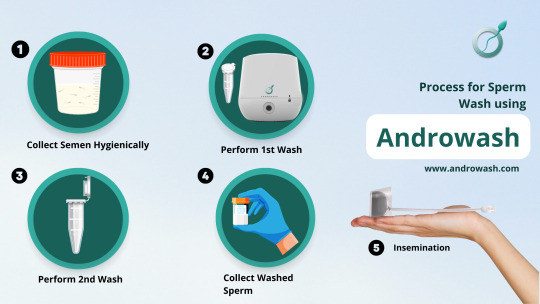
Conclusion:
Sperm washing is an important step in the IUI procedure as it allows to select the most active and healthy sperm for use in the procedure. The procedure is safe and has minimal risks. IUI with sperm washing is an effective first-line treatment for couples with certain types of infertility. It is important to consult with a fertility specialist to determine if IUI with sperm washing is the best option for you and your partner. With the help of sperm washing and IUI, many couples are able to achieve their dream of having a family.
0 notes
Text
How long does it take to wash sperm for iui procedure
The length of time it takes to wash sperm for an intrauterine insemination (IUI) procedure can vary depending on a number of factors, including the specific technique used, the characteristics of the semen, and the specific goals of the treatment. Some techniques, such as swim-up, may be completed relatively quickly, while others, such as density gradient centrifugation, may take longer.
In general, sperm washing is a complex process that requires specialized equipment and a sterile environment. It is typically performed by a fertility specialist or trained laboratory technician in a laboratory setting. The process may involve several steps, including semen collection, semen processing, and sperm preparation, and it can take several hours to complete.
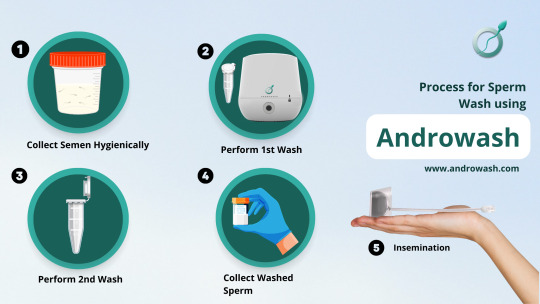
It's important to note that the length of time it takes to wash sperm for an IUI procedure can vary and may depend on the specific circumstances of the individual case. If you have questions about sperm washing or other aspects of fertility treatment, it's important to speak with a healthcare provider or fertility specialist. They will be able to provide you with more information about the process and help you to determine the best course of action for your specific situation.
0 notes
Text
What Is Normal Sperm Count?
There is no universal answer to this question, as sperm count can vary from man to man. However, a healthy range for most men is between 20 million and 50 million sperm per milliliter of semen. Anything below 20 million may indicate problems with the male reproductive system, while anything above 50 million may be an indication of fertility issues.
Normal sperm count refers to the average number of sperm per milliliter that a man's semen contains. This number can vary depending on many factors, including age, health, lifestyle habits, and exposure to toxins. A healthy normal sperm count is around 20 million/ml or higher. However, if you are concerned about your fertility or have low levels of testosterone (a common cause of decreased sperm concentration), then you may want to consult with a fertility specialist for further assessment and treatment.
Men have a normal sperm count and can produce anywhere from 2 to 15 million sperm per ejaculation. Most men's semen quality is good, but about 1 in 4 men has low testosterone levels and therefore poor fertility.
Causes of low sperm count
There are a variety of factors that can contribute to low sperm count. The most common cause is male infertility, which occurs when a man cannot produce enough semen. Other causes include:
-Toxins (including environmental toxins)
-Lack of exercise
-Hormonal problems (such as low testosterone)
-Chronic diseases or infections
–Smoking
Treatment for low sperm count: There is no one definitive solution for improving sperm count. However, common treatments include lifestyle changes (such as exercise and a healthy diet), fertility therapy (which can help to increase semen production), and medication (such as male fertility supplements). In some cases, surgery or radiation therapy may also be necessary.
How to increase your sperm count
There is no one definitive way to increase your sperm count. However, some things that may help include:
-Regular exercise
-A healthy diet
-Limited drinking or smoking
-Avoiding environmental toxins
Sperm quality testing
If you are having problems with fertility or your sperm concentration, it may be a good idea to have a semen analysis performed. A semen analysis can provide detailed information about your sperm count, quality, motility and morphology (shape).
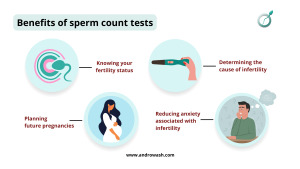
Conclusion
Now you know everything about normal sperm count and its significance. From a fertility standpoint, there are some instances when this number may be low—this includes cases where the man also has a family history of male reproductive issues. The bottom line here is that doctors often conduct special tests to determine fertility status based on the semen analysis results.
However, for most cases, it's better to consult with your doctor if you notice abnormal changes in your reproductive health. If there is no issue or concern after regular testing, then don’t worry too much about what the sperm count says!
1 note
·
View note